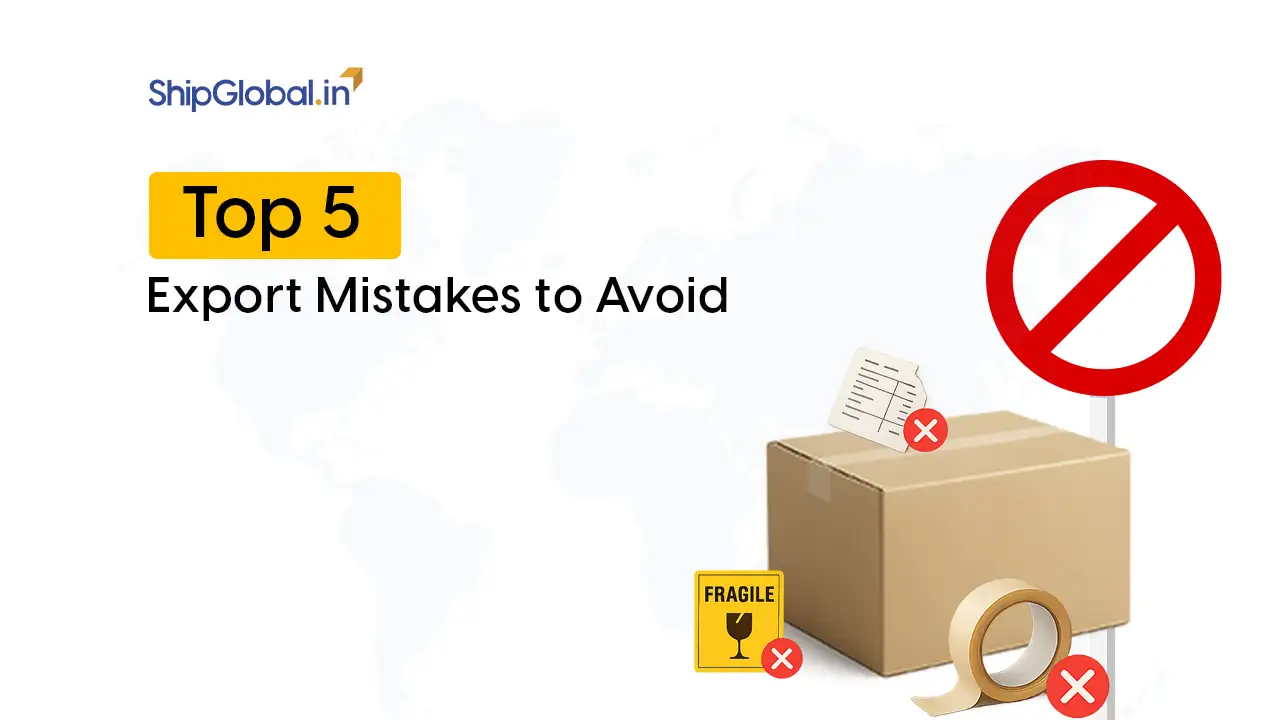When it comes to global trade, trust and risk go hand in hand. Whether you’re shipping goods across borders or sealing big business deals, you need something solid to fall back on. That’s where trade finance tools like Letters of Credit (LC) and Bank Guarantees (BG) come in.
At first, they might sound pretty similar but they’re actually used in very different ways. One helps make sure you get paid, while the other steps in if things go wrong. If you’re in the world of exports, imports, or high-value contracts, let’s break things down together so you know exactly which one makes sense for your next big move.
What is a Letter of Credit
A Letter of Credit (LC) is a payment instrument issued by a bank that guarantees the exporter will receive payment upon fulfilling the terms of the contract. Think of it as a financial promise from the buyer’s bank saying, “Hey seller, if you ship the goods as agreed and submit the right documents, we’ll make sure you get paid.”
A Letter of Credit is considered a primary payment instrument in international trade, where trust issues or differences in legal systems can make both buyers and sellers a bit nervous. To initiate an LC, the buyer approaches the issuing bank and submits transaction details, such as the beneficiary, payment terms, and value. The issuing bank in LC plays a central role in verifying documents and releasing payment.
Key Features of a Letter of Credit
- Issued by the buyer’s bank (known as issuing bank) at their request.
- Payment is made only after the seller (beneficiary or exporter) submits proof of shipment and other agreed documents.
- Offers a lot of protection to the seller.
- Purpose of LC in Export: LC is used to ensure secure trade payment and facilitate confidence in cross-border transactions, especially where buyers and sellers have limited mutual trust.
- Comes in Different Types: Sight LC, Usance LC, Irrevocable LC, and so on.
What is a Bank Guarantee
A Bank Guarantee (BG), on the other hand, works like a safety net. It is a promise by a bank to cover losses if the applicant fails to fulfill contractual obligations.
Let’s say a contractor promises to finish a building by December. The client wants a guarantee that if the contractor fails, someone (aka a bank) will cover the financial loss. That’s where a Bank Guarantee comes in.
Here, the bank says: “If our client doesn’t meet their obligation, we’ll pay the other party.”
A BG is primarily used in project finance and domestic contracts to assure the beneficiary of compensation in case of non-performance or a default.
Key Features of a Bank Guarantee
- Bank promises to pay only if the applicant defaults.
- Provides protection to both parties—buyer and seller.
- Bank Guarantee in Project Finance: BGs are crucial for government tenders, infrastructure contracts, and supply agreements, offering protection against non-performance.
Types of Bank Guarantees
Bank Guarantees come in different types, each suited to a specific trade scenario:
- Performance Guarantee: Ensures a party fulfills their contract duties. If they don’t, the bank compensates for the loss.
- Advance Payment Guarantee: Protects buyers who pay upfront by ensuring the return of funds if the supplier fails to deliver.
- Financial Guarantee: Covers a specific financial obligation, acting as a safeguard in monetary dealings.
- Bid Bond Guarantee: Used during bidding, this confirms a bidder’s commitment to fulfill the contract if selected.
- Foreign Exchange Guarantee: Helps in currency-related international transactions by protecting against exchange rate fluctuations.
- Credit Guarantee: Supports business loans by assuring lenders of repayment, enabling businesses to access credit more easily.
- Defect Liability Guarantee: Also known as a warranty guarantee, it covers post-delivery or post-completion defects in goods or projects.
Why Bank Guarantees Matter in Exports
Bank Guarantees are vital in export transactions for several reasons:
- Risk Mitigation: Exporting involves risks due to long distances, differing legal frameworks, and limited communication. A bank guarantee reassures the seller that they’ll be paid even if the buyer defaults.
- Boosts Credibility: Especially for new exporters or those dealing with unfamiliar buyers, a Bank Guarantee shows that a reputable financial institution backs their commitments.
- Supports Trade Financing: Since production and logistics require upfront investment, a BG makes it easier for exporters to secure financing.
- Builds Trust: In global trade, where face-to-face interaction is rare, a Bank Guarantee becomes a trust enabler, showing commitment and financial reliability.
- Contractual Compliance: Many international contracts mandate bank guarantees. They signal professionalism and ensure parties stick to the agreement.
- Protection against Market Volatility: With global trade exposed to political and economic shifts, a bank guarantee acts as a safety buffer for the exporter.
Letter of Credit vs. Bank Guarantee: Key Differences
Here’s a breakdown of how LCs and BGs differ:
- Meaning:
A Letter of Credit guarantees payment to the seller once conditions are met. A Bank Guarantee, on the other hand, assures compensation if the applicant fails to meet obligations. - Risk Coverage:
LCs do not cover default risk—they simply promise payment upon compliance. BGs, however, come into play only when the party (applicant) fails to perform or pay. - Use Case:
LCs are common in cross-border trade to secure payments. BGs are frequently used in real estate and government projects. - Payment Mechanism:
In an LC, payment is made when the seller meets the terms. In a BG, payment happens only if the buyer defaults.
Letter of Credit vs. Bank Guarantee: A Quick Comparison Table
| Criteria | Bank Guarantee | Letter of Credit |
|---|---|---|
| Definition | A promise by the bank to cover losses if the applicant fails to fulfill contractual obligations | A commitment by the bank to pay the seller (beneficiary) once specific conditions are met and necessary documents are submitted |
| Areas of Usage | Mainly used in construction, real estate, and government tenders | Commonly used in international trade to secure cross-border payments |
| Risk Exposure | The buyer takes most of the risk; the bank pays only if something goes wrong | The bank takes on more risk since it guarantees payment upfront |
| Number of Parties Involved | Usually 3: the bank, applicant (often buyer), and beneficiary | Can involve up to 5 parties – like the issuing bank, advising bank, confirming bank, buyer (applicant), and seller (beneficiary) |
| Payment Trigger | Only kicks in if there’s a default or breach of contract | Triggered once the seller meets the agreed conditions and submits the right documents |
When to Use a Letter of Credit or Bank Guarantee
The decision to use one over the other depends on the transaction’s nature. If payment assurance is key, an LC is ideal for international trade. If the concern is performance or delivery obligations, a BG serves contractual needs better. Understanding Letter of Credit vs BG dynamics helps businesses pick the right tool.
Procedure Before Issuing an LC or BG
A bank follows a structured process to thoroughly assess the applicant’s business profile and financial stability before issuing a Bank Guarantee or a Letter of Credit. This evaluation safeguards the interests of both the applicant and the bank in case of unforeseen issues. Here’s an outline of the process:
- Business and Financial Checks / Creditworthiness Assessment for BG and LC:
The bank verifies the applicant’s business background and financial records to assess their ability to meet obligations. - Risk Analysis:
It evaluates the potential risks associated with the contract or transaction and decides how to manage them. - Setting Liability Limits:
The bank sets a maximum liability it is willing to bear in case of default. - Final Commitment:
Once all assessments are done, the bank commits to a payable amount, either as a guarantee (BG) or as a direct payment upon conditions being met (LC).
Is it Necessary to Have an Account to Get LC from a Particular Bank
Not necessarily. You don’t need to be a client or hold an account with the issuing bank to apply for a Letter of Credit. However, since the bank is vouching for your financial capability, they will require a detailed application and supporting documents. Having an existing relationship with the bank may improve your chances of approval.
When is a Bank Guarantee Typically Needed
Bank Guarantees are most commonly used in large-scale projects like infrastructure or construction, where buyers or contractors need to assure the other party of performance or payment.
Legal and Compliance Aspects
RBI Guidelines on LC and BG
- Governed by uniform customs and practices (UCP 600 for LC)
- BGs must comply with the Indian Contract Act
RBI Guidelines for Caution-Listed Exporters in Case of BG
Banks must obtain prior approval from the Reserve Bank of India (RBI) before issuing performance guarantees for exporters who are caution-listed. Due diligence must be performed to confirm the applicant’s credibility, capacity to execute the contract, reasonableness of the value involved, and compliance with standard practices under the Foreign Exchange Management Regulations.
Legal Enforceability of Guarantees
- LC: Enforced via documentary compliance
- BG: Enforced in case of breach or non-performance
Advising Bank Vs Guarantor Bank
- LC involves an advising bank that authenticates and forwards the LC
- BG is managed by the guarantor bank who takes liability if the principal/applicant defaults
Financial and Risk Considerations
Financial Risk Coverage LC Vs BG
- LC reduces seller’s credit risk by securing payment
- BG reduces buyer’s operational risk by securing performance
Creditworthiness Assessment for BG
- BGs often require thorough background and financial checks before issuance
LC and BG Fraud Risks
- Both instruments are vulnerable to fraud; robust documentation and due diligence are critical
Still Confused? Here’s a Simple Analogy
Imagine you’re ordering a custom couch online from a seller in another country.
- If you use a Letter of Credit, you (the buyer) tell your bank: “I’ll pay the seller only if they send me proof that the couch is built and shipped as promised.” The bank will only release payment once everything checks out.
- If the seller asks for a Bank Guarantee, they’re basically saying: “If I mess up or don’t deliver, my bank will pay you compensation.”
Are There Charges for LCs or BGs
Yes, both come with costs. Financial institutions charge a fee based on the total amount covered:
- Letter of Credit: Generally, 0.75% to 1.5% of the transaction value.
- Bank Guarantee: Usually ranges between 0.5% and 1.5% of the guaranteed amount.
Final Thoughts
IIn the debate of letter of credit vs bank guarantee (difference between LC and BG), each instrument has its specific role and should be selected based on transaction type, risk appetite, and trust levels between parties. While LC is all about ensuring payment when everything goes right, BG is about covering loss when things go wrong. Both of them reduce risk but they do it in very different ways.
From an industry point of view, both Letters of Credit and Bank Guarantees are evolving into much more than just financial safeguards. They are key to managing trade risks and building dependable global supply chains. For e-commerce exporters, these tools are helping create smoother, trust-driven transactions across borders.
So, before you pick one, ask yourself: “Do I need a commitment to pay or a safety net in case of failure?”
And as always, talk to your bank or trade advisor. Because the right financial tool can make or break your next big deal.
Frequently Asked Questions (FAQs)
A bank-issued document guaranteeing payment to a seller once specific terms and documents are fulfilled.
A bank’s assurance to cover losses if the if a debtor is unable to pay the debt or fails to meet contract terms.
Different types of bank guarantees include Performance Guarantee, Advance Payment Guarantee, Financial Guarantee, Bid Bond Guarantee, Foreign Exchange Guarantee, Credit Guarantee, and Defect Liability Guarantee.
The main parties include the applicant (buyer/ importer), issuing bank (applicant’s bank), beneficiary (seller/ exporter), and in some cases, an advising bank or confirming bank.
Yes. Bank Guarantees are legally binding and enforceable under the Indian Contract Act, provided they meet all contractual conditions.
Yes, in complex trade deals or large projects, both instruments may be used.
Yes. Like any financial instrument, LCs and BGs carry some risk of fraud. Proper due diligence, document verification, and working with reputed banks help minimize these risks.







